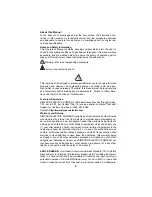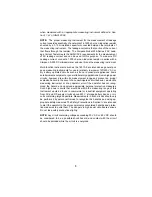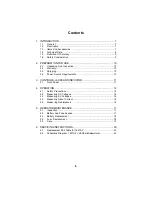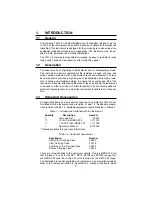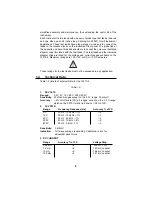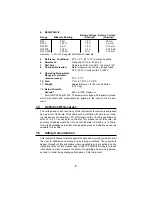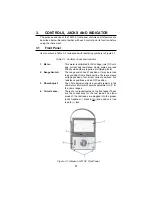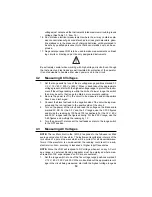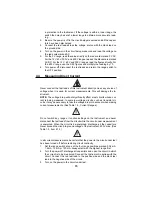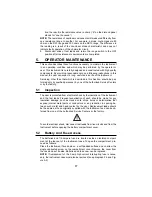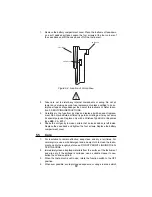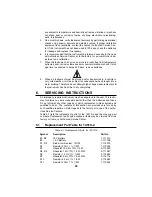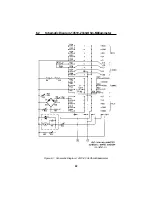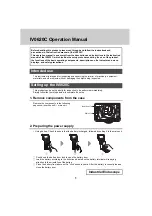
16
4.
Read the current in milliamperes on the black AC-DC scales. For the
0.06 mA range, use the 0-60 scale and divide the reading by 1000. For
the 1.2 mA range, use the 0-12 scale and divide the reading by 10. For
12 mA range, use 0-12 scale and read directly. For the 120 mA range,
use 0-12 scale and multiply readings by 10.
5.
Upon completion of all readings, turn off power to the circuit and remove
test leads from circuit.
6.
IMPORTANT: Return range switch to the OFF position when current mea-
surements are completed.
4.5
Measuring Resistances
Before making resistance measurements, remove all power to the circuit un-
der test and discharge all capacitors.
When DC resistances are measured, the internal batteries of the Instrument
furnish power for the measuring circuit. The zero adjust control provides cor-
rection for battery deterioration over long periods of time.
1.
Set the range switch to the desired resistance range position.
2.
Connect the probe ends of the test leads together (short tips together).
3.
Observe the Instrument indication. It should read “0” on the ohms arc,
which is at the top of the dial.
4.
If the pointer does not read “0”, rotate the V Adj. (Zero Adjust Control)
knob either direction until it does read “0”. If the pointer cannot be brought
up to the “0” mark, replace the appropriate battery (1.5 V for low ranges
and two 15 V for the high range — refer to paragraph 5.3 for battery re-
placement).
Do not apply any power to the circuit before measurements are completed
and the test leads are disconnected.
5.
Connect the test leads across the resistance which is to be measured. If
there is a “forward” and “backward” resistance, such as with diodes, ob-
serve the polarity in the lead connections to control each test. The resis-
tance should be relatively low when the diode is forward biased by the
battery potential and higher in the opposite direction.
When checking diodes and semiconductors do not use the RX1000 or
RX10,000 ranges. Using these ranges may result in permanent damage to
component being checked.
6.
Read the indication of the OHMS arc at the top of the dial. Note that the
arc reads from right to left for increasing values.
7.
Multiply the reading by the multiplier factor indicated at the switch posi-
!
Summary of Contents for 14510-2
Page 1: ...Simpson 14510 2 Volt Ohm Milliammeter OPERATOR S MANUAL...
Page 4: ...4 NOTES...
Page 5: ...5 NOTES...
Page 23: ...23 NOTES...

